Abstract
Altogether 22 347 men who participated in the United Kingdom's atmospheric nuclear weapon tests and experimental programmes in Australia and the Pacific Ocean between 1952 and 1967 were identified from the archives of the Ministry of Defence and followed up. Their mortality and incidence of cancer were compared with those in 22 326 matched controls selected from the same archives. The risk of mortality in the participants relative to that in the controls was 1·01 for all causes and 0·96 for all neoplasms. Thirty eight causes of death were examined separately. Significant differences in mortality were found for leukaemia, multiple myeloma, and other injury and poisoning, with higher rates in the participants, and for cancers of the prostate and kidney and chronic bronchitis, with higher rates in the controls. The mortality from leukaemia and multiple myeloma in the participants was slightly greater than would have been expected from national values (standardised mortality ratios of 113 and 111, respectively), but in the controls it was substantially lower (standardised mortality ratios of 32 and 0, respectively). Examination of the rates of leukaemia and multiple myeloma in groups of participants showed very little difference between groups characterised by recorded doses of external radiation or type of test participation and failed to indicate any specific hazard. Evidence obtained from participants who reported themselves voluntarily (or were reported by relatives or friends) suggested that 17% of participants may have been omitted from the main study group but that any resulting bias was small.
Most of the differences observed between the participants and controls were interpreted as due to chance, but some may be due to differences in smoking habits. Participation in the test programme did not seem, in itself, to have caused any detectable effect on the participants' expectation of life, apart from possibly causing small risks of developing leukaemia and multiple myeloma.
Full text
PDF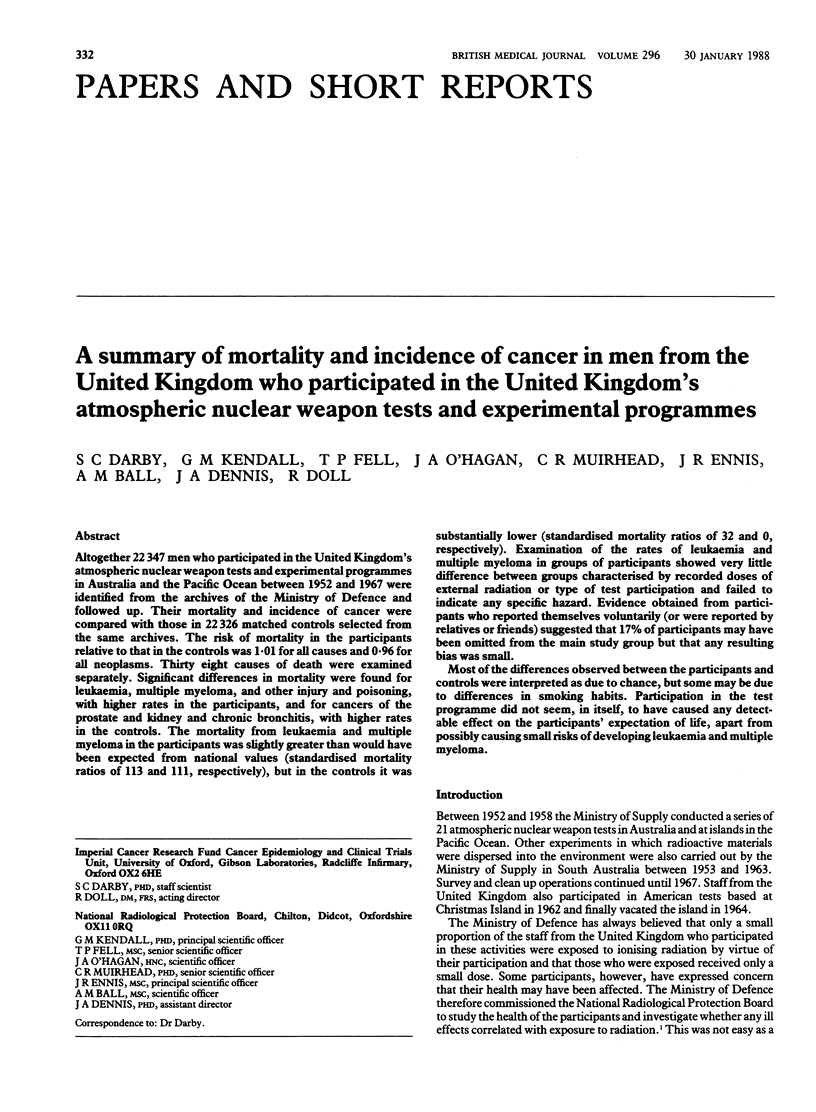
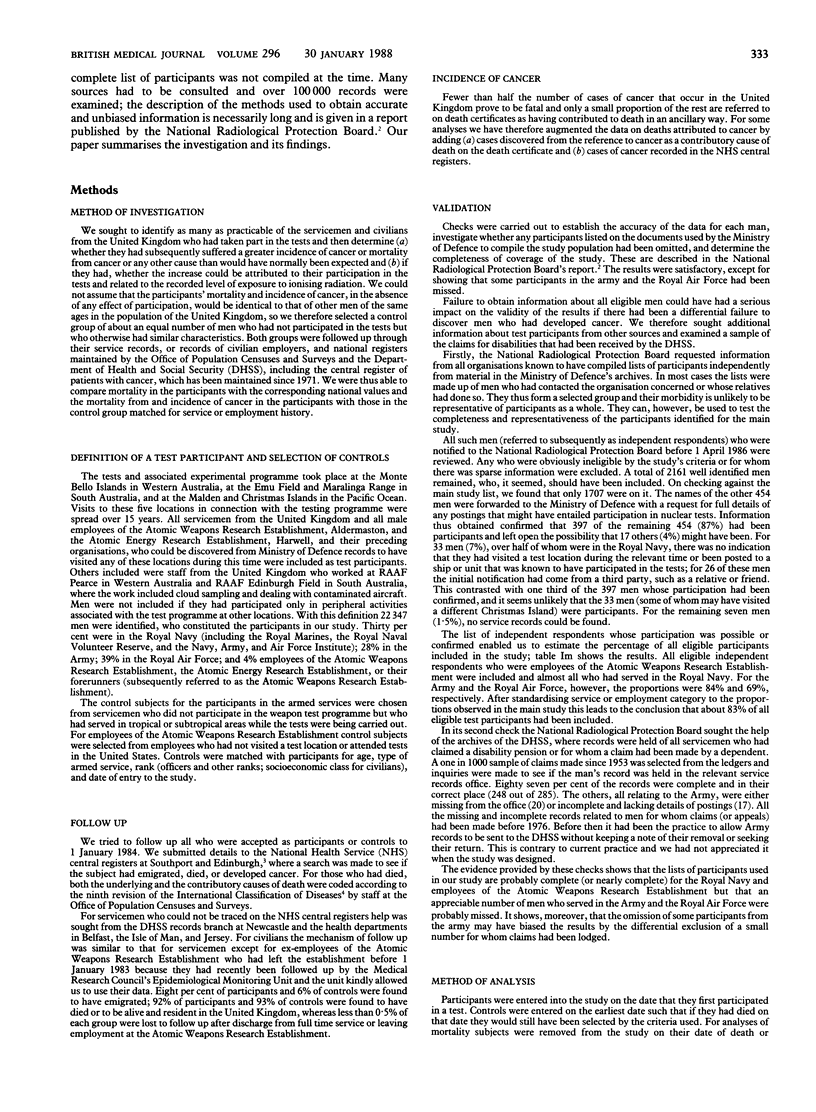
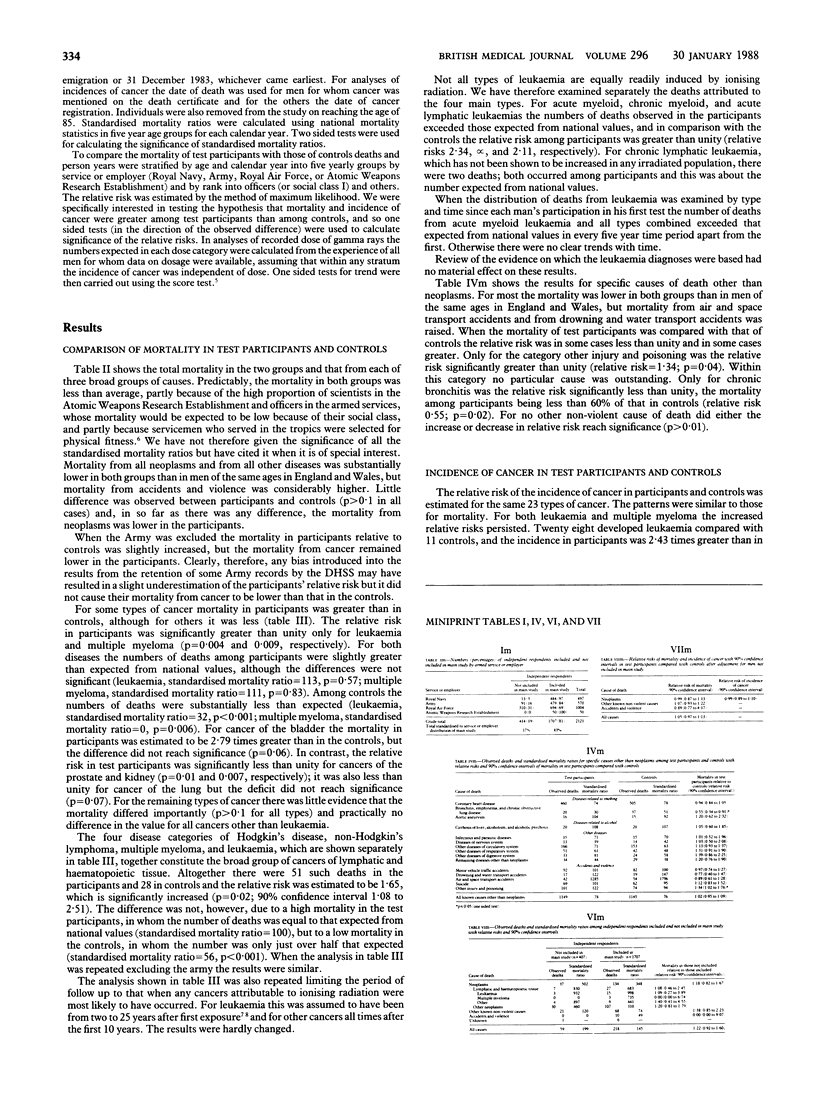
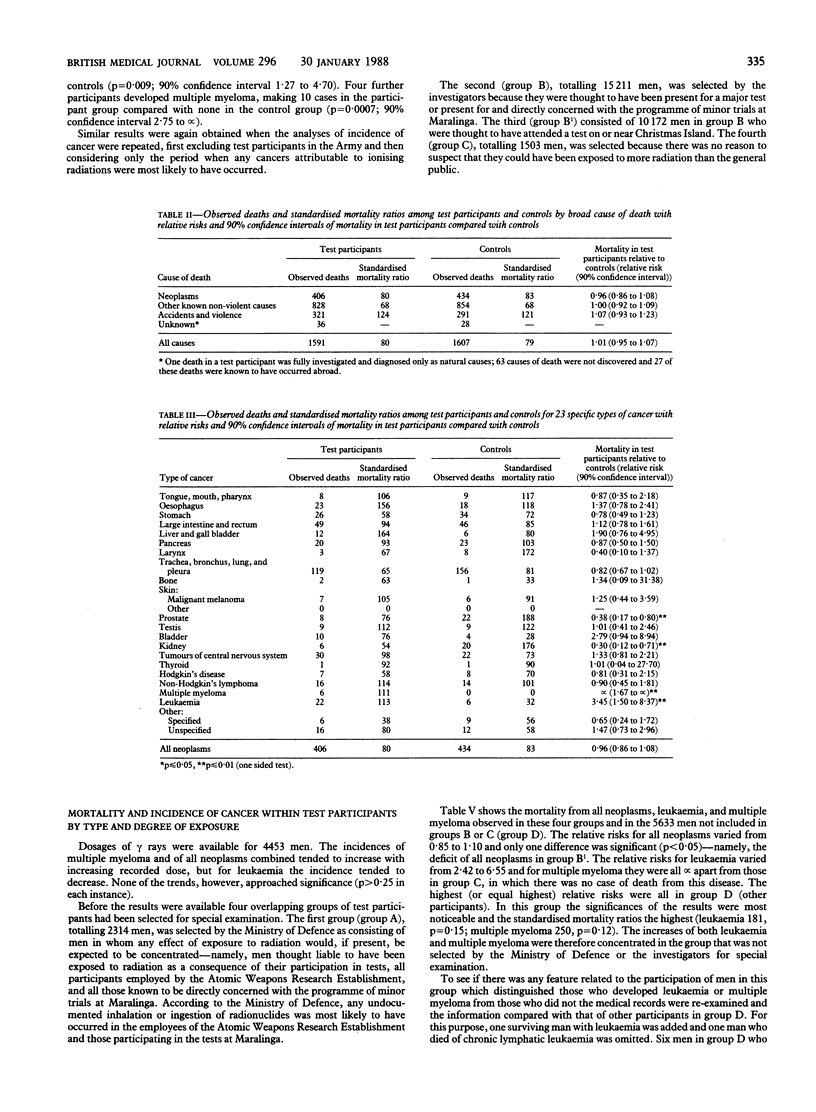
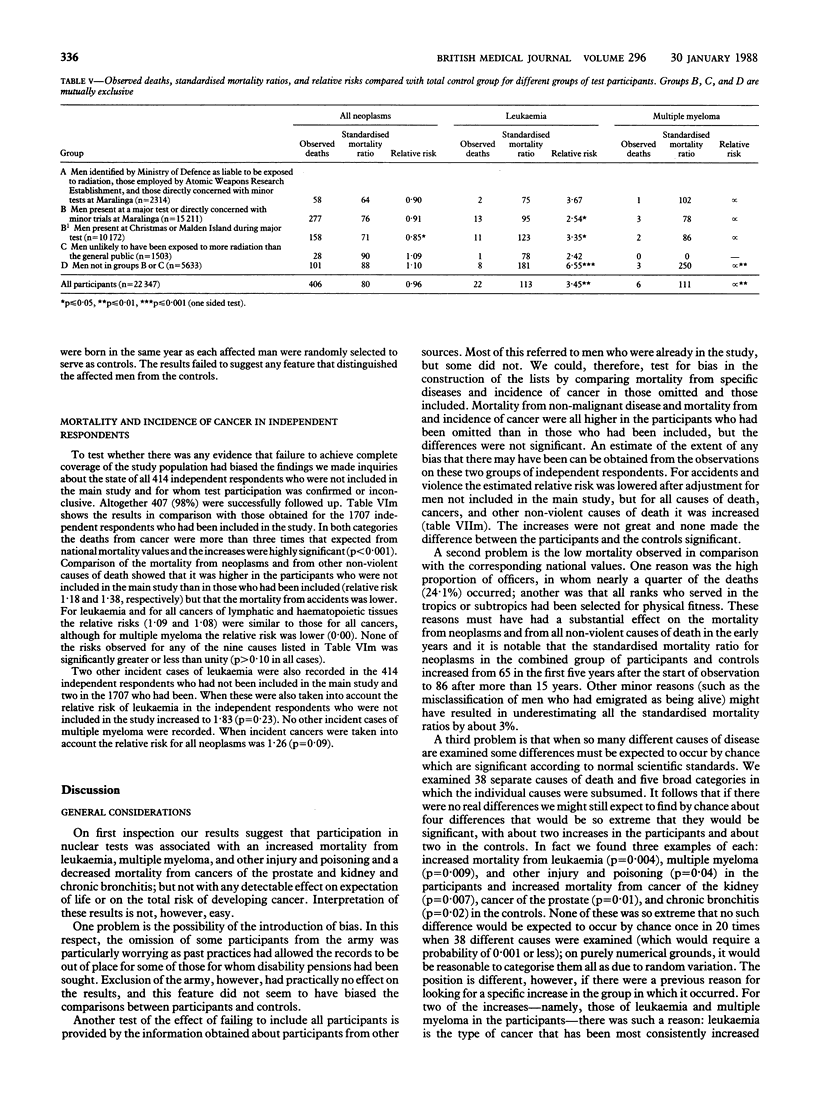
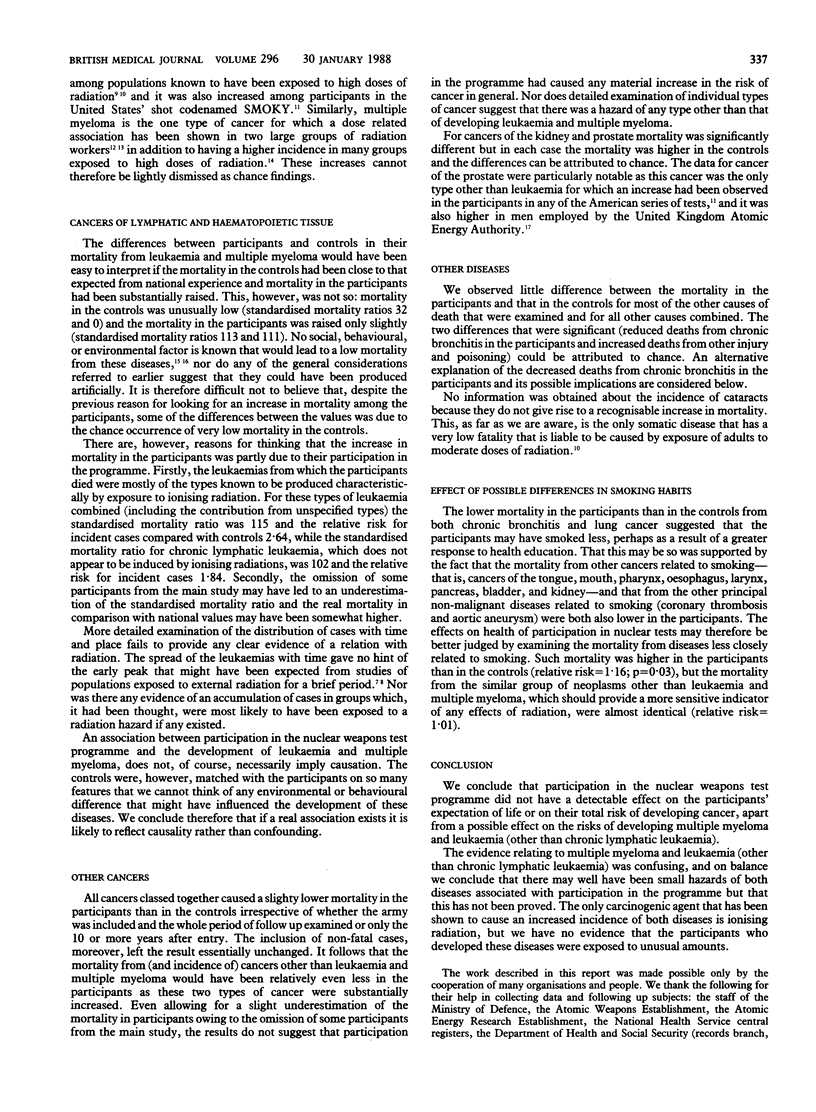
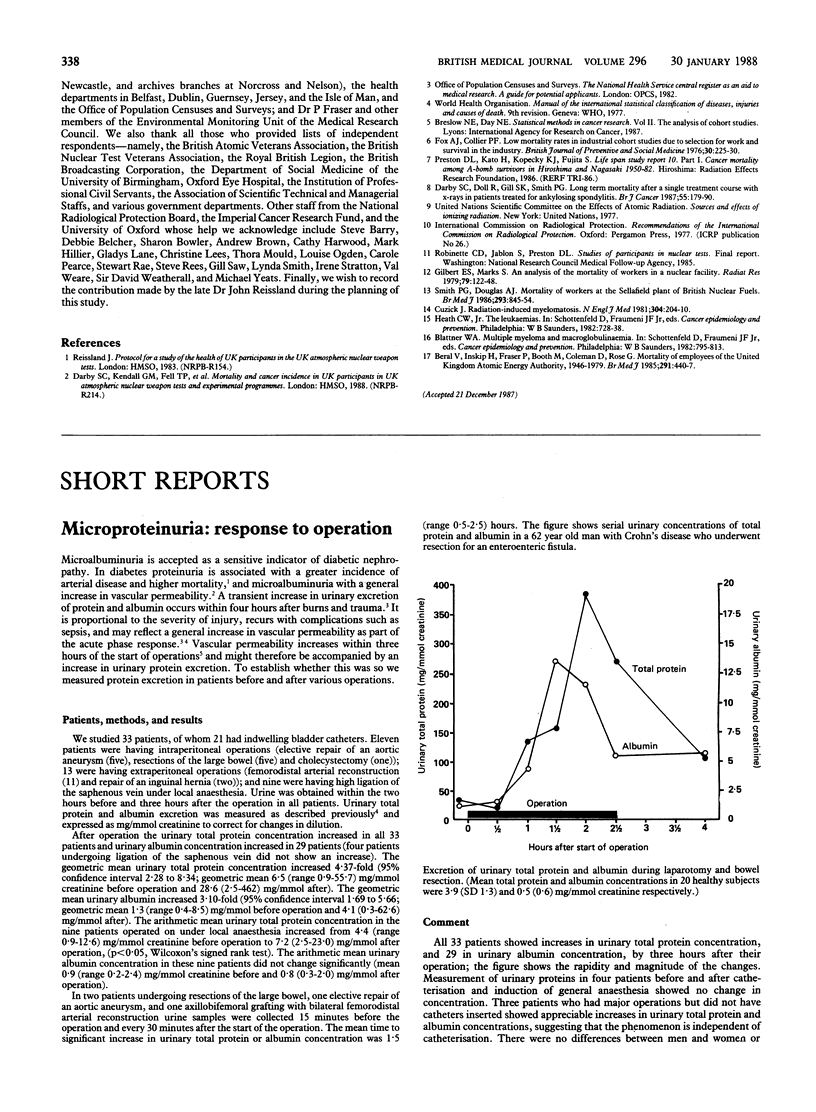
Selected References
These references are in PubMed. This may not be the complete list of references from this article.
- Beral V., Inskip H., Fraser P., Booth M., Coleman D., Rose G. Mortality of employees of the United Kingdom Atomic Energy Authority, 1946-1979. Br Med J (Clin Res Ed) 1985 Aug 17;291(6493):440–447. doi: 10.1136/bmj.291.6493.440. [DOI] [PMC free article] [PubMed] [Google Scholar]
- Cuzick J. Radiation-induced myelomatosis. N Engl J Med. 1981 Jan 22;304(4):204–210. doi: 10.1056/NEJM198101223040404. [DOI] [PubMed] [Google Scholar]
- Darby S. C., Doll R., Gill S. K., Smith P. G. Long term mortality after a single treatment course with X-rays in patients treated for ankylosing spondylitis. Br J Cancer. 1987 Feb;55(2):179–190. doi: 10.1038/bjc.1987.35. [DOI] [PMC free article] [PubMed] [Google Scholar]
- Fox A. J., Collier P. F. Low mortality rates in industrial cohort studies due to selection for work and survival in the industry. Br J Prev Soc Med. 1976 Dec;30(4):225–230. doi: 10.1136/jech.30.4.225. [DOI] [PMC free article] [PubMed] [Google Scholar]
- Gilbert E. S., Marks S. An analysis of the mortality of workers in a nuclear facility. Radiat Res. 1979 Jul;79(1):122–148. [PubMed] [Google Scholar]
- Smith P. G., Douglas A. J. Mortality of workers at the Sellafield plant of British Nuclear Fuels. Br Med J (Clin Res Ed) 1986 Oct 4;293(6551):845–854. doi: 10.1136/bmj.293.6551.845. [DOI] [PMC free article] [PubMed] [Google Scholar]


